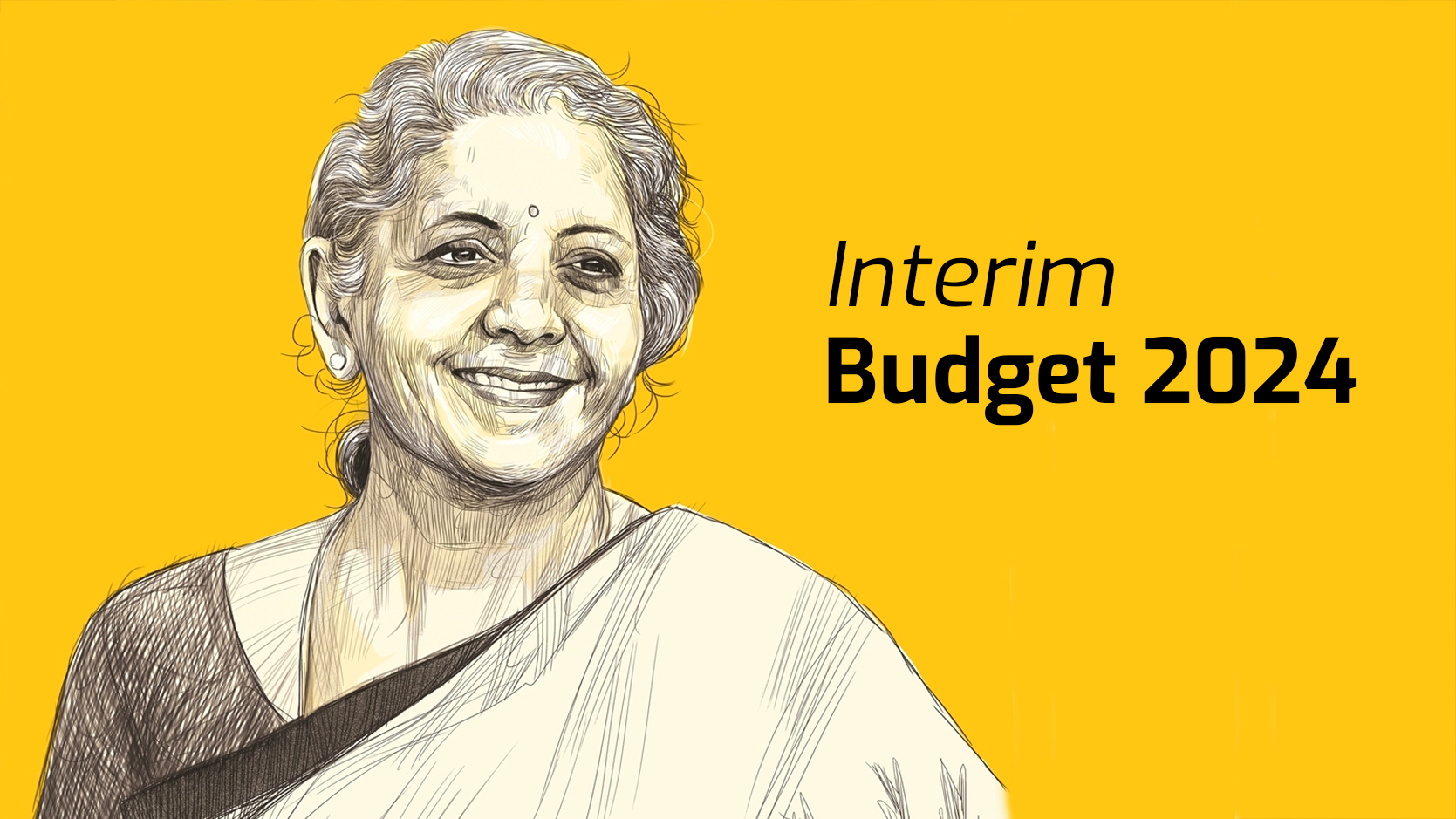Polity: Two Supreme Court Judges on Nine-Judge Bench Refer to CJI’s ‘Harsh’ Criticism of Krishna Iyer in a ‘Proposed Judgement’
Why in News?
Justice Nagarathna says judges should not follow the practice of decrying past judges; Justice Dhulia says the criticism could have been avoided.
Overview
Recently, two Supreme Court judges on a nine-judge Bench addressed the Chief Justice of India’s critical comments about the “Krishna Iyer Doctrine.” Justice Iyer, known for his emphasis on human rights and judicial reforms, popularised the phrase “bail is the rule, jail is the exception.” In a “proposed judgement,” the Chief Justice described Justice Iyer’s approach as a “disservice to the Constitution,” which triggered responses from Justices Nagarathna and Dhulia.
Explanation of the Judicial Views
- Justice Nagarathna’s Perspective: She argued that the past decisions by judges like Justice Iyer must be contextualised within their socio-economic environment. Policies like liberalisation and globalisation, which emerged post-1991, changed the judicial approach, but this does not invalidate earlier doctrines.
- Justice Dhulia’s Perspective: The only dissenter, felt the criticism was “harsh” and highlighted that doctrines like those of Justice Iyer and Justice O. Chinnappa Reddy continue to reflect strong humanist values central to Indian jurisprudence.
Additional Relevant Facts for Context
- The ‘Krishna Iyer Doctrine’: It is integral to India’s criminal jurisprudence, especially concerning the rights of the accused and underprivileged.
- Shift in Judicial Philosophy: Post-1991 economic reforms saw a gradual shift towards a market-driven perspective, but the judiciary retains doctrines balancing economic policy with individual rights.
- Role of ‘Proposed Judgments’: Draft opinions allow for intellectual exchanges, though quoting from such drafts is unconventional.
Conclusion
The debate highlights the balance between respecting judicial precedents like the Krishna Iyer Doctrine and adapting to modern socio-economic realities in India’s evolving legal landscape.
Validity of Law Cannot Be Challenged for Violating Basic Structure: Supreme Court
Why in News?
Allowing courts to strike down laws based on undefined concepts like democracy, federalism, and secularism may introduce uncertainty in constitutional adjudication.
Overview
The Supreme Court ruled that the validity of ordinary laws cannot be challenged on the grounds of violating the “Basic Structure” of the Constitution. The judgement, delivered by a three-judge Bench led by the Chief Justice of India, reaffirmed the position that undefined concepts like democracy, federalism, and secularism under the Basic Structure doctrine are not sufficient grounds for invalidating legislation.
The case addressed whether the Basic Structure doctrine could be applied to annul a regular statute, with the judgement specifically referring to the Uttar Pradesh Madrasa Education Board Act, 2004.
Basic Structure Doctrine
- The Basic Structure doctrine, developed through landmark cases such as Kesavananda Bharati (1973) and Raj Narain (1975), holds that certain principles form the foundation of the Constitution and cannot be altered by ordinary legislative processes.
- The Court emphasised that concepts such as democracy, federalism, and secularism are “undefined” in the Constitution and thus cannot be invoked to challenge the validity of laws.
Impact on Ordinary Legislation
- The Chief Justice opined that applying the Basic Structure doctrine to test the validity of an ordinary law would introduce uncertainty and disrupt constitutional adjudication.
- The judgement clarified that for a law to be challenged on the grounds of secularism, it must directly violate specific constitutional provisions related to secularism.
Uttar Pradesh Madrasa Education Board Act, 2004
- The Court upheld the validity of the Uttar Pradesh Madrasa Education Board Act, 2004, which had been challenged on the grounds of violating the principle of secularism.
- The Allahabad High Court’s finding, which claimed the law disregarded secularism, was ruled insufficient without specific reference to constitutional provisions.
Historical Context
The judgement referred to earlier cases such as Indira Nehru Gandhi vs. Raj Narain (1975), where the Supreme Court had first applied the Basic Structure doctrine to a Constitutional Amendment. It differentiated between constitutional amendments and ordinary laws, with the majority in Raj Narain holding that the Basic Structure doctrine cannot be applied to ordinary laws.
Judicial Precedents
The judgement cited the views of former Justices in the Raj Narain case, noting that the Basic Structure doctrine, being “vague” and “indefinite,” could not serve as a standard for evaluating the validity of ordinary laws.
Conclusion
The Supreme Court ruling clarifies that the Basic Structure doctrine applies to constitutional amendments, not ordinary laws, and undefined terms like democracy can’t easily invalidate laws.
International Relations: On India-Canada Diplomatic Relations | Explained
Why in News?
India accuses Canada of harboring Khalistani terrorists, questioning Trudeau’s political motives. Canada is reluctant to extradite due to concerns over human rights and sovereignty.
Overview
Diplomatic relations between India and Canada have recently been strained, primarily due to allegations made by the Canadian Prime Minister regarding Indian intelligence involvement in the 2023 killing of Hardeep Singh Nijjar, a Canadian citizen with alleged ties to the Khalistani movement. The fallout led to the expulsion of top diplomats from both countries, exacerbating tensions between the two nations, particularly affecting Hindu-Sikh relations in Canada.
Issues in India-Canada Relations
| Issue | Details |
|---|---|
| Khalistani Extremism | India accuses Canada of harboring Khalistani extremists and separatists, including those involved in the 1985 Air India bombing. |
| Diplomatic Expulsions | Following Trudeau’s allegations, both countries expelled senior diplomats in a move that intensified the diplomatic conflict. |
| Extradition Challenges | India’s requests for extraditing Khalistani militants are often denied by Canada, citing legal and human rights concerns. |
Sikh ‘Vote Bank’ Politics in Canada
- While Canada’s Sikh population is small (2%), their political influence is significant due to geographic concentration.
- Despite this, there is no direct evidence to suggest that Trudeau’s government is pandering to the Sikh vote bank by accusing India of involvement in Nijjar’s killing. Interestingly, surveys show a significant portion of the Sikh vote supports the Conservative Party.
Political and Cultural Misunderstandings
- There are deep-rooted misunderstandings between India and Canada due to differing perceptions of the Khalistani issue.
- Canadians, particularly those of Indian descent, perceive the 1985 bombing as a “foreign tragedy,” leading to systemic racial prejudice. On the other hand, Indian authorities expect Canadian institutions to act in a manner similar to their own, especially regarding the rule of law and counter-terrorism actions.
Impact of India-Canada Diplomatic Tensions
1. Diplomatic Impact
- Strains India’s relations with Canada and its allies, affecting multilateral cooperation.
- Canada’s allegations harm India’s global image, especially on human rights and terrorism issues.
2. Economic Impact
- Disruptions in trade and investment, particularly in sectors like energy and technology.
- Challenges for Indian diaspora in Canada, including visa issues and potential security concerns.
3. Security Impact
- Increased risks from Khalistani extremism within Canada.
- Issues with extradition of individuals wanted for terrorism-related offences in India.
- Impact on intelligence sharing and regional security cooperation.
4. Geopolitical Impact
- Could weaken India’s global influence and diplomatic leverage, especially with Western nations.
- Increased strain in India’s ties with the Five Eyes intelligence alliance.
Conclusion
India-Canada diplomatic tensions stem from allegations of Khalistani extremism, extradition disputes, historical grievances, and political factors, with complex legal, cultural, and media dimensions shaping relations.
Social Justice: UP Madarsa Education Act Upheld by SC: What Was the Case?
Why in News?
The SC verdict on the Madarsa Act will impact Uttar Pradesh directly, with CJI Chandrachud warning of broader implications for religious education nationwide.
Introduction
In November 2024, the Supreme Court (SC) of India upheld the Constitutional validity of the Uttar Pradesh Board of Madarsa Education Act, 2004 (Madarsa Act). This ruling overturned a decision by the Allahabad High Court, which had struck down the law in March 2024. The SC’s decision not only impacts madarsas in Uttar Pradesh but is expected to influence the broader landscape of religious education in India.
Background of the UP Madarsa Education Act (2004)
- The Uttar Pradesh Madarsa Education Act, 2004, established a legal framework for madarsa education, which includes both religious and secular studies.
- The law led to the creation of the Uttar Pradesh Board of Madarsa Education, with a focus on religious education alongside the National Council of Educational Research and Training (NCERT) curriculum.
Key Provisions of the Act
- The Act governs madarsas offering education from Class 10 (Maulvi) to Master’s level (Fazil).
- It mandates that these institutions impart both religious education and modern subjects.
- The UP Madarsa Education Board is tasked with curriculum preparation, exam conduction, and certification.
Legal Challenge
A petition was filed against the Act on the grounds that it violated Articles 14, 15, and 21-A of the Indian Constitution, which guarantee equality before the law, prohibit discrimination on various grounds, and mandate free and compulsory education for children between 6 to 14 years of age, respectively.
Allahabad High Court’s Decision (March 2024)
The Allahabad High Court struck down the Act on several constitutional grounds:
- Violation of Secularism: The court emphasised that secularism demands equal treatment of all religions by the state. It observed that the Act promoted compulsory religious education, which conflicted with the secular nature of education under the Constitution.
- Right to Education (Article 21A): The HC ruled that the law violated the right to free and compulsory education by providing inadequate quality education, especially in modern subjects, which is a constitutional mandate.
- Conflict with Central Laws: The Act’s provision for madarsas to grant degrees was deemed unconstitutional, as only universities or entities deemed as universities under the University Grants Commission Act, 1956, can confer degrees.
Supreme Court’s Ruling and Arguments
The SC bench, led by Chief Justice D.Y. Chandrachud, addressed two critical issues during the hearings:
- Religious Education vs. Religious Instruction: The distinction between teaching about religion (religious education) and religious instruction was highlighted. The SC had ruled in previous cases (e.g., Ms. Aruna Roy vs Union of India, 2002) that while religious instruction is prohibited in state-recognized institutions, education about religions can promote communal harmony.
- Partial vs. Full Strike Down of the Act: The SC questioned the HC’s decision to strike down the entire Act. It emphasised that instead of invalidating the whole Act, provisions that are incompatible with the Constitution could have been amended. The CJI suggested that the UP government should focus on ensuring a secular educational framework within madarsas.
Impact of the SC Verdict
- The SC ruling will primarily affect madarsa education in Uttar Pradesh, but Chief Justice Chandrachud warned that the principles established in this case could extend to religious education across India.
- This may include gurukuls, convent schools, and other religious institutions, prompting a review of their curriculum and secular education provisions.
Conclusion
The Supreme Court’s decision reinforces the balance between secularism and religious education in India. While the Act remains constitutional, it emphasizes the need for reforms to align madarsa education with constitutional mandates, particularly in ensuring access to quality, compulsory education.
Science: India Must Create ‘Leading’ Space Firms, Not Just Service Companies: ISRO Chief
Why in News?
India has 450 satellite component companies, but ISRO needs new players, young talent, a robust start-up ecosystem, and significant government and private investment for growth.
Context
India’s space ambitions are at a pivotal point, as it seeks to position itself as a major global player in the space economy. ISRO Chairman, S. Somanath, emphasises the need for a transition from merely service-oriented companies to “leading space firms,” which would be crucial for India to increase its contribution to the global space economy from 2% to 10%.
Current Status of India’s Space Industry
- 450 Companies: India has 450 companies involved in manufacturing components for satellite construction and launches.
- Technological Know-How: India has 90% of the required knowledge to build rockets and 60% of the necessary materials for space components.
- Challenges: Despite this progress, India’s space sector is hindered by a lack of demand, with few private companies investing in technology development. The fast pace of advancements in communications technology often renders developed products obsolete before they are commercially viable.
ISRO’s Vision for Future Space Ecosystem
- Need for Leading Space Companies: India must create not just service-oriented firms but leading space companies capable of advancing the space frontier.
- Importance of Young Talent and Startups: The sector needs fresh talent and a vibrant start-up ecosystem to spur innovation and growth.
- Government and Private Sector Investment: Large-scale investments from both government and private entities are essential to foster this transformation.
Government Support
- The Indian government must support the space sector through policies that enhance data accessibility and encourage private sector participation.
- The vision includes landing an Indian astronaut on the Moon by 2040, which would foster technological growth across sectors like electronics and bio-pharmaceuticals.
Global Competitiveness
- Achieving independence in space and becoming a globally competitive force requires scaling up capabilities and long-term investment in research and technology.
Conclusion
To achieve its space ambitions, India must foster innovation, encourage private sector involvement, and secure large-scale investments, ensuring self-reliance and global competitiveness in space technology.
Russian Rocket Launches Iranian Satellites into Orbit as Moscow and Tehran Expand Ties
Why in News?
Successful Russian rocket launch carries Iranian satellites, showcasing growing Moscow-Tehran cooperation in space exploration.
Introduction
In November 2024, a Russian Soyuz rocket successfully launched from the Vostochny spaceport in the Russian Far East, carrying two Iranian satellites, Kowsar and Hodhod, into orbit. This launch exemplifies the growing cooperation between Moscow and Tehran in space exploration, a partnership that extends beyond space and into military and geopolitical spheres. The satellites were the first to be launched for Iran’s private sector, marking a significant milestone in the country’s space endeavors.
Details of the Launch
- The Soyuz rocket, launched from the Vostochny spaceport in Russia’s Far East, placed its payload into orbit nine minutes after lift-off.
- In addition to Iran’s two satellites, the launch carried two Russian Ionosphere-M Earth observation satellites and numerous smaller satellites from various nations.
Iran’s Space Ambitions
- The satellites, Kowsar and Hodhod, are the first to be launched for Iran’s private sector, a significant development in Iran’s space program.
- These launches follow Russia’s previous support in launching Iranian satellites, including the 2022 launch of Khayyam (an Earth observation satellite) and the February 2024 launch of Pars-1.
Geopolitical Context
- The launch underscores the growing Moscow-Tehran ties, especially as both nations face Western sanctions.
- Tehran’s involvement in providing drones to Moscow for use in Ukraine has led to accusations from Ukraine and the West, which Moscow and Tehran deny.
Challenges in Iran’s Space Program
- Iran has faced setbacks in its civilian space program, with five consecutive failures in the Simorgh satellite launch program and other issues, including a tragic fire in 2019 that claimed three lives.
- However, Iran’s Revolutionary Guard has seen success with its military space launches, including those from a base near Shahroud.
Strategic Implications
- U.S. intelligence assessments have expressed concerns that Iran’s satellite launch technology could accelerate its development of intercontinental ballistic missiles (ICBMs), a potential pathway to nuclear weapon delivery.
- The launch of these satellites also occurs in the context of rising tensions over Iran’s nuclear activities, as Tehran continues to enrich uranium and faces growing scrutiny over its nuclear intentions.
Future Prospects
- Iran and Russia are working toward a “comprehensive strategic partnership,” expected to be formalised during the meeting.
Conclusion
The Iranian satellite launch aboard a Russian rocket highlights deepening Moscow-Tehran ties, raising concerns over dual-use technology’s impact on global security and geopolitical trends.
If Tardigrades Crowd-Sourced Their Remarkable Genes, Can Humans?
Why in News?
Tardigrades can survive hazardous radiation, extreme heat and cold, and can go for long periods without water; researchers are wondering if these abilities can be ‘transferred’ to humans.
Introduction
Tardigrades, often referred to as water bears or moss piglets, are microscopic, eight-legged creatures that have fascinated researchers due to their remarkable resilience. These ancient organisms can survive in extreme conditions—radiation, desiccation, freezing temperatures, and even space—raising the possibility of utilising their survival mechanisms in human biotechnology, medicine, and space exploration.
Facts and Features of Tardigrades
| Feature | Description |
|---|---|
| Size | Microscopic (0.3-0.5 mm) |
| Phylum | Tardigrada |
| Common Names | Water bears, Moss piglets |
| Unique Ability | Cryptobiosis (state of suspended animation) |
| Resilience | Survive radiation, extreme heat, cold, dehydration |
| Known Species | Over 1,300 species identified |
| Evolutionary History | Originated at least 600 million years ago |
| Habitat | Arctic, deep-sea floors, deserts, space vacuum |
Cryptobiosis: The Key to Survival
Tardigrades enter cryptobiosis, a state where metabolic processes are almost entirely suspended. This mechanism allows them to survive extreme dehydration, radiation, and freezing. Researchers have studied the specific proteins and genes that enable this survival strategy, hoping to replicate it for practical uses.
Tardigrades’ Resistance to Radiation
Recent studies have shown that tardigrades can withstand radiation levels 1,000 times higher than the lethal dose for humans. The mechanisms behind this resistance are tied to specific proteins and genes:
- Intrinsically Disordered Proteins: These proteins lack a fixed structure and help in resisting desiccation.
- Small Heat Shock Proteins: Protect proteins from aggregation under stress, aiding survival in high temperatures.
- Horizontal Gene Transfer: Tardigrades acquire beneficial genes from other organisms, contributing to their resilience, such as the DODA1 gene involved in radiation resistance.
Genomic Research and Discovery
Recent genomic analyses have revealed specific genes responsible for radiation resistance:
- TRID1: Crucial for DNA repair during radiation exposure.
- NDUFB8: Supports mitochondrial function, ensuring energy production under stress.
These findings suggest that the unique survival traits of tardigrades are a result of both evolution and gene transfer, opening potential avenues for human applications.
Potential Applications for Humans
Tardigrades’ survival mechanisms could lead to significant advancements in various fields:
- Biomedical Research: Stabilising proteins for vaccine production and gene therapy.
- Space Exploration: Protecting human cells and biological systems during space missions.
- Biotechnology: Enhancing the resilience of microbes and cells used in industrial processes.
Tardigrades and Horizontal Gene Transfer
Research indicates that horizontal gene transfer contributes over 0.5% of the tardigrades’ genetic makeup, highlighting the potential of gene transfer in adaptation. This could inspire new biotechnological methods for enhancing resistance in human cells, especially for space exploration or high-radiation environments.
Conclusion
Tardigrades’ survival abilities under extreme conditions, including radiation and desiccation, offer potential breakthroughs in medicine, biotechnology, and space exploration through unique genomic mechanisms.
On the Growth Track: How Dedicated Freight Corridors are Adding to GDP, Boosting Rail Revenues
Why in News?
Dedicated Freight Corridors are specific routes for freight transportation by the Railways. Here’s why they were planned, and how they are contributing to GDP growth.
Context
Dedicated Freight Corridors (DFCs) are specialised railway routes exclusively for freight transportation. These corridors significantly enhance the capacity and efficiency of India’s logistics and freight system, thereby boosting the Indian economy. This article explores their impact on GDP growth, freight costs, and rail revenues, based on a study by the University of New South Wales.
Why were DFCs Needed?
The creation of DFCs arose from two key challenges faced by Indian Railways:
- Overburdened Golden Quadrilateral: The existing rail routes linking Delhi, Mumbai, Chennai, and Howrah were congested, carrying over 50% of both passenger traffic and freight traffic. This limited further expansion and efficiency.
- Declining Share of Rail Freight: Railways’ share in the total freight traffic had been declining, and the National Rail Plan envisioned increasing it to 45% by 2030, necessitating dedicated infrastructure.
Impact on the Economy
The introduction of DFCs has resulted in several economic benefits:
- Reduction in Freight Costs: A recent study by the University of New South Wales found that freight costs have been reduced by up to 0.5%, contributing to lower prices for goods and making exports more competitive.
- Boost to Railways’ Revenues: Between FY 2018–19 and FY 2022–23, DFCs contributed significantly (2.94%) to the revenue growth of Indian Railways.
- Faster and Safer Freight Movement: Freight trains on DFCs are faster, heavier, and safer, with over 325 trains running daily, a 60% increase from the previous year. These improvements have led to over 232 billion GTKMs and 122 billion NTKMs of freight carried since inception.
Current Status and Future Developments
- DFC Performance: As of 2024, more than 10% of Indian Railways’ freight is being handled by DFCs. Future studies will assess their broader economic impact.
- Proposed DFCs: Several other corridors are planned, such as:
- East Coast Corridor: Kharagpur to Vijayawada
- East-West Sub-corridors
- North-South Sub-corridor: From Vijayawada to Itarsi
Study Methodology
The Australian study used a Computable General Equilibrium (CGE) model, incorporating data from various sources, including freight costs, industry inputs, and economic data from the Ministry of Road Transport and Highways and Indian Railways. This model has been validated and calibrated using actual economic data to ensure accuracy.
Social Impact
The DFCs have shown a “social-equalising effect,” where less economically advanced regions benefit more, improving regional economic conditions and reducing disparities.
Conclusion
Dedicated Freight Corridors (DFCs) are vital for India’s economic growth, improving logistics, reducing costs, and boosting industrial output, strengthening both the rail and broader economy.
Rising STEM Research Demands Revitalised Education
Why in News?
With large sums of money being announced for initiatives such as quantum computing, cybersecurity, or artificial intelligence, it is essential to find students who are skilled; it is a struggle now.
Overview
With significant funds directed toward emerging fields such as quantum computing, cybersecurity, and artificial intelligence, India’s struggle to find skilled students has become a critical issue. The quality of STEM education in India faces challenges related to inadequate skill levels among graduates, faculty shortages, and the misalignment of institutional focus, threatening both industry and research growth. This article discusses actionable strategies to address these challenges, with an emphasis on enhancing pedagogy, fostering collaboration between teaching and research institutions, and aligning STEM education with industry needs.
Key Points and Suggested Reforms
1. Current Challenges in STEM Education
- Lack of Skills: Many graduates lack industry-ready skills, with a dwindling number pursuing higher education.
- Faculty Shortages: Institutions face issues with underqualified faculty focused more on publishing research than on teaching.
- Impact on Research & Industry: The shortage of skilled talent threatens to underutilize investments in advanced technologies.
2. Focus on Quality of Training
- Problem with Current Rankings: Emphasis on research outputs over teaching quality results in faculty prioritising publication over pedagogy.
- Predatory Publishing: Limited resources and a weak research environment lead to increased participation in low-quality publications.
3. Proposed Solutions
- Separate Rankings: Rank teaching institutions primarily based on teaching quality rather than research output.
- Pedagogical Development: Emphasise mentorship, training programs, and inter-institutional collaborations to improve teaching methods.
4. Joint Degree Agreements
- Enhanced Student Pathways: Establish dual degree programs where students from teaching institutions complete part of their coursework in research institutions.
- Benefits:
- Improved quality of graduates.
- Strengthened curriculum at teaching institutions.
- Opportunities for faculty and student exchanges.
Strategic Initiatives Aligned with NEP 2020 and ANRF Objectives
| Initiative | Objective | Expected Outcome |
|---|---|---|
| Centres of Excellence in Pedagogy | Improve teaching skills, mentorship, and course quality | Higher-quality graduates |
| Dual Degree Programs | Strengthen curriculum and hands-on learning | Increase employability, skill set |
| Separate Institution Rankings | Encourage teaching focus in teaching institutions | Better education quality |
Conclusion
Revitalizing India’s teaching institutions through improved pedagogy, joint agreements with research institutes, and faculty focus on quality can enhance talent development and scientific innovation.
Array




